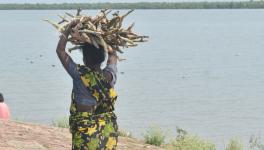Rare Exhibition in Kolkata Chronicles 100 Years of Working Class Movement

Kolkata: They build our homes in scorching heat, they toil in factories while we sleep at night, they dig out coal from the pits risking their lives so that we can have electricity, the list of the struggles and movements of the working class is endless – some of which have won us the rights that we enjoy today. All this, and much more has been chronicled in a rare exhibition of its kind held in Kolkata recently.
The exhibition on the past 100 years of working class movement in the sub-continent was held in Ganashakti Bhawan, and drew hundreds of trade union activists. The informative exhibition comprising rare books and newspapers was a virtual mine of information for all those involved and interested in the labour movement.
Among the milestones the exhibition threw light on was the organised strike of the Indian working class, as reported in Somprakash, a weekly, dated May 5,1862, which was started by Pt Ishwarchand Vidyasagar, in which over 1,000 coolies of Howrah railway station had participated, demanding eight hours work. This strike was supplemented by the clerks’ strike in the East India Railway Audit Department, and in 1863 by barbers in Mumbai (then Bombay) and another one by (palki) hand carriage carriers in Kolkata. Then there was a strike by printing press workers in 1873, as also one by butchers in Chennai (then Madras).
Nuggets of information on little known historic strikes, such as the Howrah Coolie strike in 1862 (14 years earlier than the world famous Hay Market strike on May 1, and later the May 4 protests in Chicago in 1886) , were displayed in the exhibition, supplemented by old newspaper cuttings.
The exhibition also took its viewers across the boundary of time, to revisit the nascent stages of the growth of the working class movements even amidst the communal frenzy during the pre-and post-Independence period, including the Posts & Telegraph strike in 1961 and 1969, the Railway strike in 1974 , and the strike against neo liberalisation after 1991.
Many rare books were on displayed, some from archives of the Muzaffar Ahmad Library, State Library and books from the personal collection of communist leaders, such as Jyotii Basu, Pramode Dasgupta, Saroj Mukherjee, Anil Biswas and others. Even the periodical, Forward, started by Netaji Subhas Chandra was on display.
The exhibition was organised by the Muzaffar Ahmad Librarys’ Ganashakti Bhawan unit, situated in the Ganashakti Premises. The seven-day exhibition began on August 5, the birth anniversary of communist stalwart “Kakababu” or Muzaffar Ahmad and was inaugurated by Communist Party of India (Marxist) State Secretary Surjyakanta Mishra in the presence of Left Front Chairman Biman Basu, and several party leaders, some whom felt that the rare information displayed in the exhibition should be taken to the district level in West Bengal.
Get the latest reports & analysis with people's perspective on Protests, movements & deep analytical videos, discussions of the current affairs in your Telegram app. Subscribe to NewsClick's Telegram channel & get Real-Time updates on stories, as they get published on our website.























